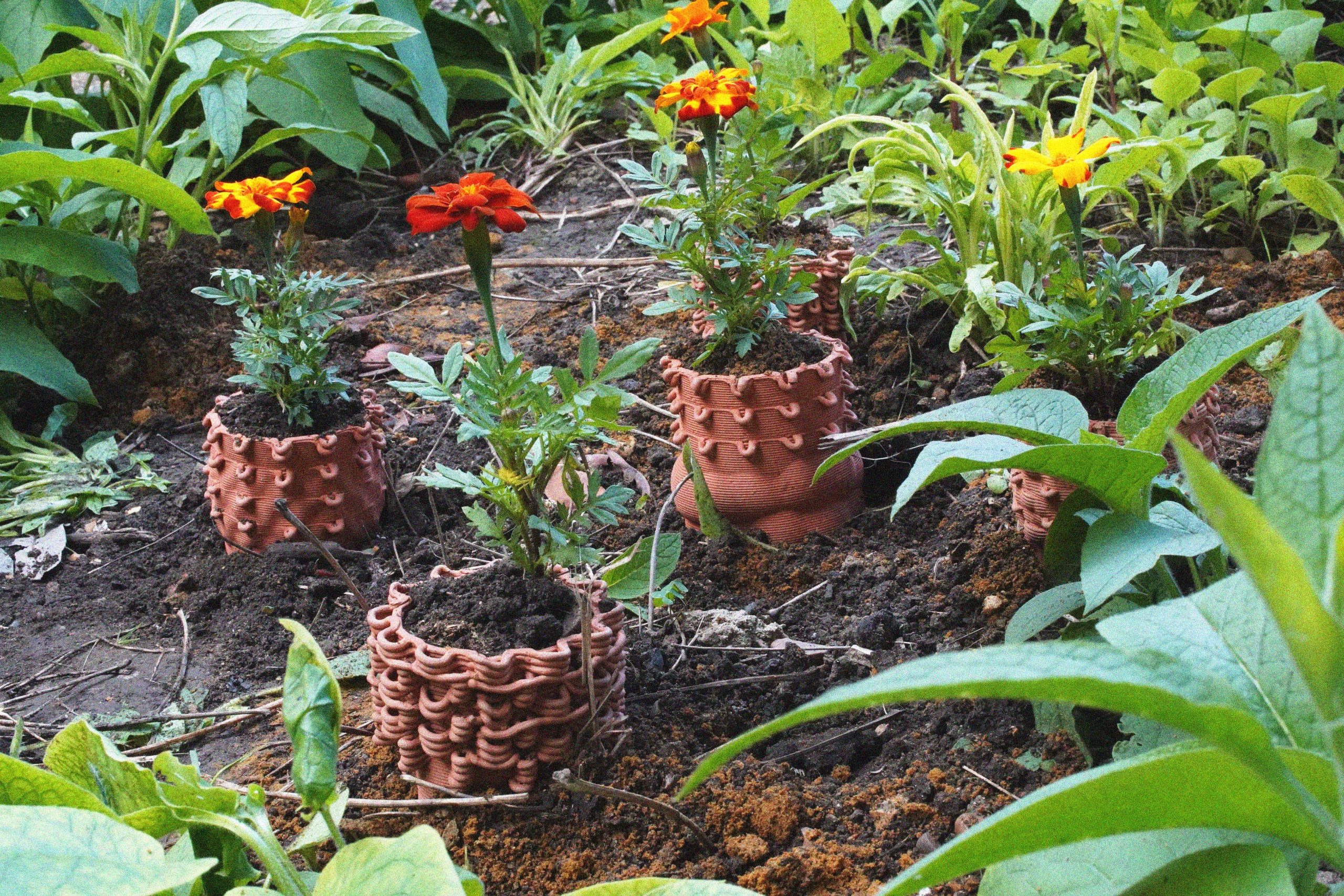Fluid Grounds

Useful information
- Team members
- Derk Ringers
- Country
- Netherlands
- Keywords
- 3D ceramics flood mitigation adoptation regenerative
Short Description
Fluid Grounds is an inquiry into climate change adoption using adaptive manufacturing methods.
Detailed Description
Fluid Grounds is a practice-based research project that dismantles the systems that shape our relationship with and response to rising water mitigation in urban areas throughout history. As water levels rise, large-scale engineering is needed to provide safety from a mode of concealment around watery environments, creating a land/water binary. At the same time, the demand of rising populations and the need for urban growth is forcing these new developments into precarious areas.
The objects are made to transform public landscapes and respond dynamically to the natural forces behind mitigated floods. They embody a scenario where large-scale developments will require additional measures to kerb flooding. At the same time, Fluid Grounds demonstrates that there are multiple and more local approaches to rising water levels outside of large-scale, monogamous development projects. The pieces are made using 3D clay printing methods which are chosen for their regenerative qualities.
Project Details
- Does your design take social and cultural challenges and human wellbeing into consideration?
The consequences of a changing climate are not distributed with equity. The distribution of risk is connected to social dilemmas in the sense that the need for urban growth is forcing developments into precarious areas. Fluid Grounds embodies a strategy that reintroduces watery landscapes into public spaces. Thereby, relieving critical areas like housing and workplaces.
- Does your design support sustainable production, embodying circular or regenerative design practices?
The porous quality of the clay and the geometries are grounded in the idea that physical complexity creates the conditions for complex ecologies. This is a concept often used in the regeneration of urban landscapes that are initially deprived of physical complexity. Adapting for the regeneration of both a flooded as well as non-flooded habitat is how these objects transform public parks into places that can adapt to discontinuous and unpredictable futures.
- Does your design use principles of distribution and open source?
The pieces are made using a 3D ceramics printer which allows for context-specific adaptation and distributed production. The different geometries that make up the pieces are shared online to allow for easy reconfiguration using free software. In addition, there is a making manual that describes all the steps in the process.
- Does your design promote awareness of responsible design and consumption?
The design embodies an alternative strategy to climate change adaptation. Rather than being products for individual consumers, they are products that embody a communal practice and communal understanding of climate change mitigation. In that sense, they open up a more inclusive discourse around climate change adaptation as opposed to expert-led mitigation.
Images


